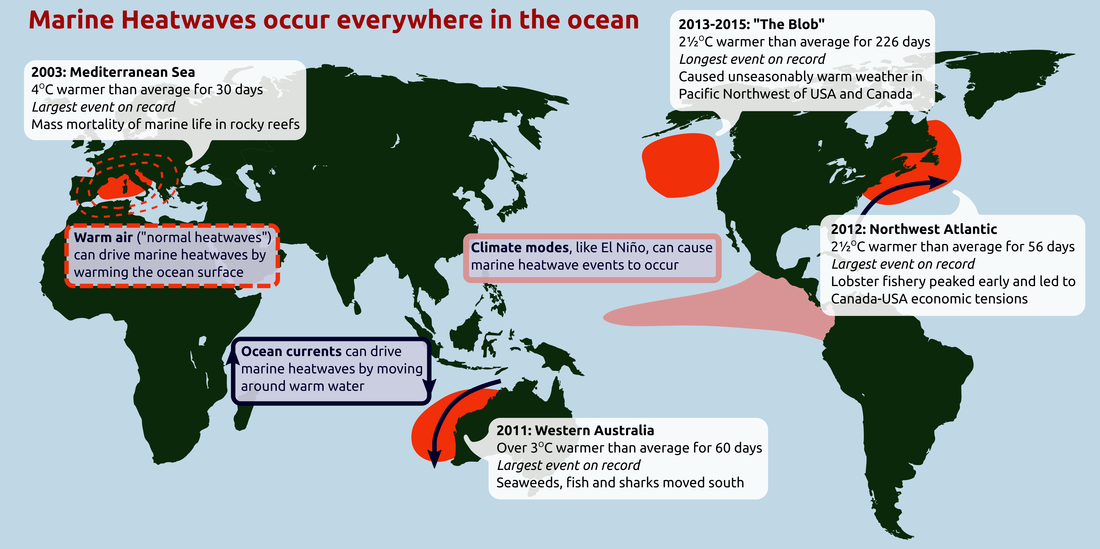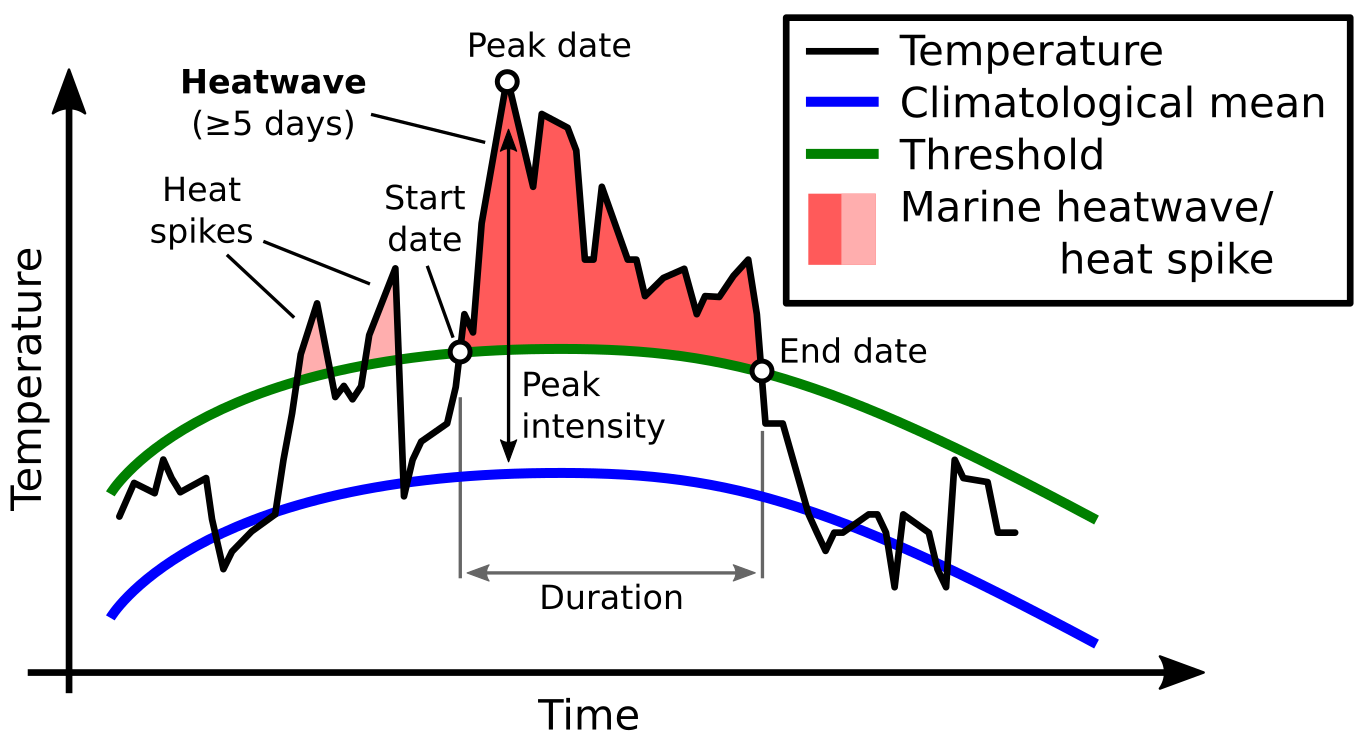Note4Students
From UPSC perspective, the following things are important :
Prelims level: Marine Heatwave
Mains level: Read the attached story

Scientists have observed unusually high sea surface temperatures (SSTs) in the Pacific Ocean around the western coast of the United States. This marine heatwave (MHW), covering an area of roughly 6.5 million square kilometres, can affect marine life and lead to droughts in the surrounding regions.
What are MHWs?
- We know that heatwaves occur in the atmosphere. We are all familiar with these extended periods of excessively hot weather.
- However, heatwaves can also occur in the ocean and these are known as marine heatwaves, or MHWs.
- These marine heatwaves, when ocean temperatures are extremely warm for an extended period of time can have significant impacts on marine ecosystems and industries.
When do they occur?
- Heatwaves can happen in summer and also in winter, where they are known as “winter warm-spells”.
- These winter events can have important impacts, such as in the southeast of Australia where the spiny sea urchin can only colonize further south when winter temperatures are above 12 °C.
What causes marine heatwaves?
- Marine heatwaves can be caused by a whole range of factors, and not all factors are important for each event.
- The most common drivers of marine heatwaves include ocean currents which can build up areas of warm water and air-sea heat flux, or warming through the ocean surface from the atmosphere.
- Winds can enhance or suppress the warming in a marine heatwave, and climate modes like El Niño can change the likelihood of events occurring in certain regions.
- MHWs can be caused due to large-scale drivers of the Earth’s climate like the El Niño Southern Oscillation (ENSO).
Impacts of the MHWs
- Marine heatwaves affect ecosystem structure, by supporting certain species and suppressing others.
- For example, after the 2011 marine heatwave in Western Australia the fish communities had a much more “tropical” nature than previously and switched from kelp forests to seaweed turfs.
- Marine heatwaves can cause economic losses through impacts on fisheries and aquaculture.
- Temperature-sensitive species such as corals are especially vulnerable to MHWs. In 2016, marine heatwaves across northern Australia led to severe bleaching of the Great Barrier Reef.
How do we measure marine heatwaves?

- A marine heatwave occurs when seawater temperatures exceed a seasonally-varying threshold (usually the 90th percentile) for at least 5 consecutive days.
- Successive heatwaves with gaps of 2 days or less are considered part of the same event.
Why study MHWs?
- MHWs are increasing in frequency due to climate change. MHWs increased by 54 per cent in the last 30 years.
- Despite their potential impact on the health of marine ecosystems, MHWs remain one of the least studied consequences of global warming.
Way Forward
- Marine heatwaves clearly have the potential to devastate marine ecosystems and cause economic losses in fisheries, aquaculture, and ecotourism industries.
- However, their effects are often hidden from view under the waves until it is too late.
- By raising general awareness of these phenomena, and by improving our scientific understanding of their physical properties and ecological impacts, we can better predict future conditions and protect vulnerable marine habitats and resources.
Get an IAS/IPS ranker as your 1: 1 personal mentor for UPSC 2024

